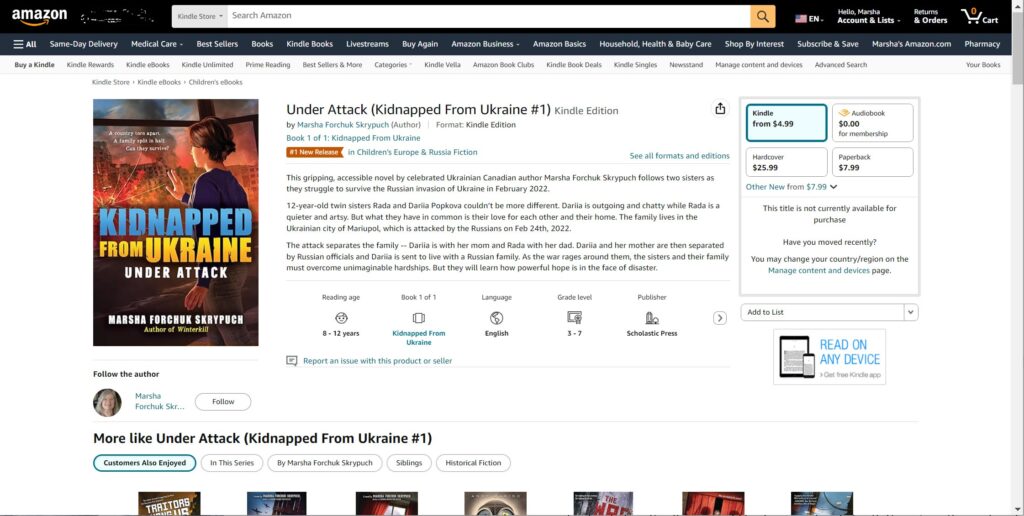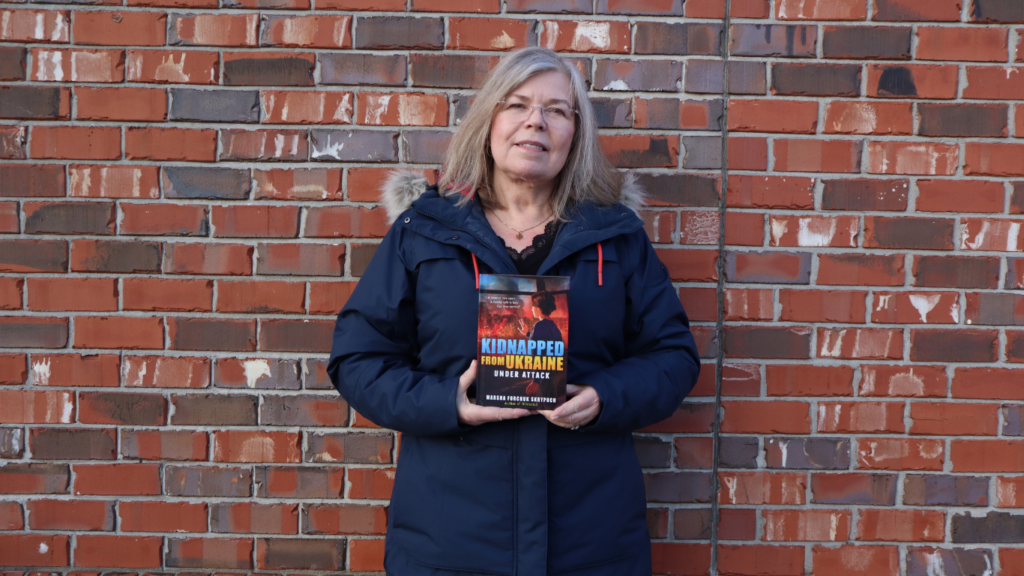It was a pleasure to speak with Sérgio about my brand new book, Under Attack. Thanks so much for the interview!
Tag: Ukrainian
First presentations for Under Attack
Under Attack will be published tomorrow, but I got to do two presentations at one of my all-time favorite schools — Riverside Elementary in Suwanee GA with one of my all-time favorite library media specialists, Kristin Bartholomew!! The students were absolutely fabulous and it was a great way to kick off 2025.
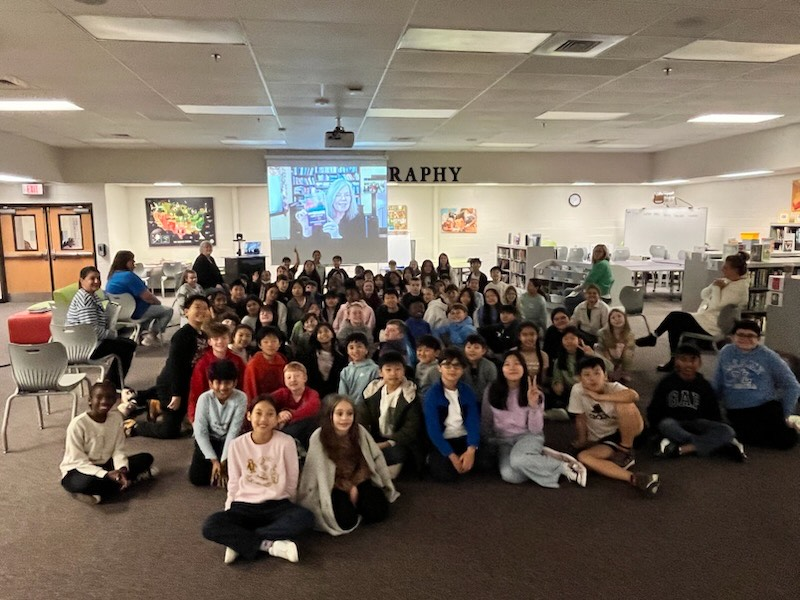
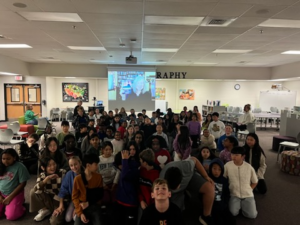
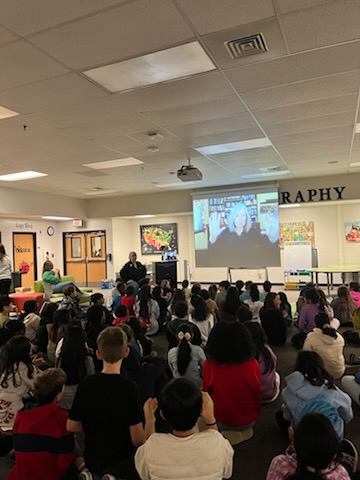
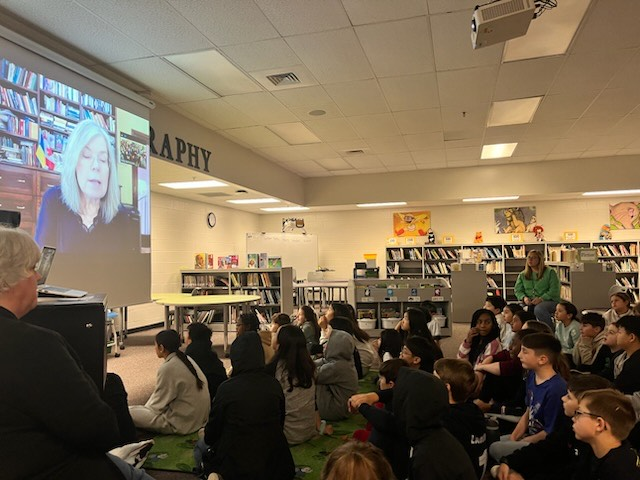
Under Attack: Book Launch at Riverside Bookshelf Jan 16.
Hope to see you there!
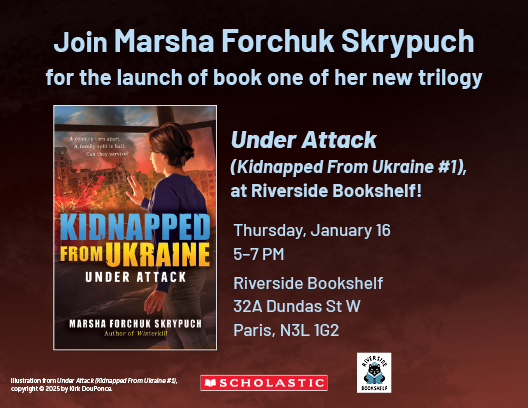
Koota Ooma book launch for Under Attack: Jan 29
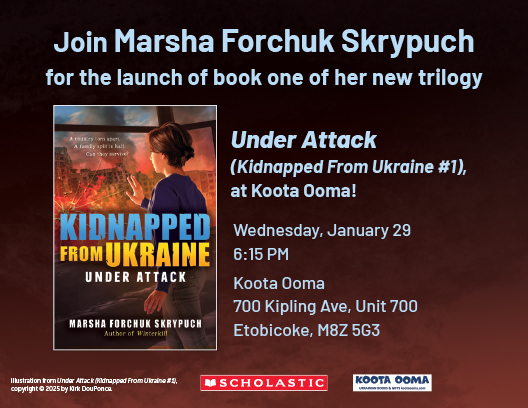
Starred review from Booklist!
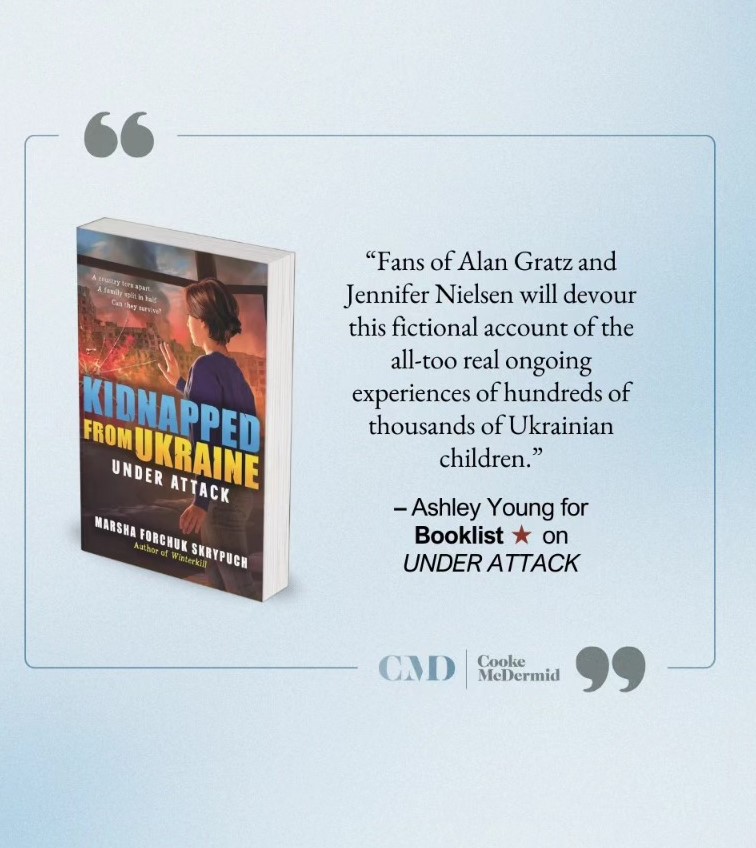
Kidnapped from Ukraine: Publishers Weekly awesome review!
Thrilled with this review of Under Attack!
They say: “this important and tough to read novel … fictionalizes, in harsh detail, true events from a child’s point of view.”
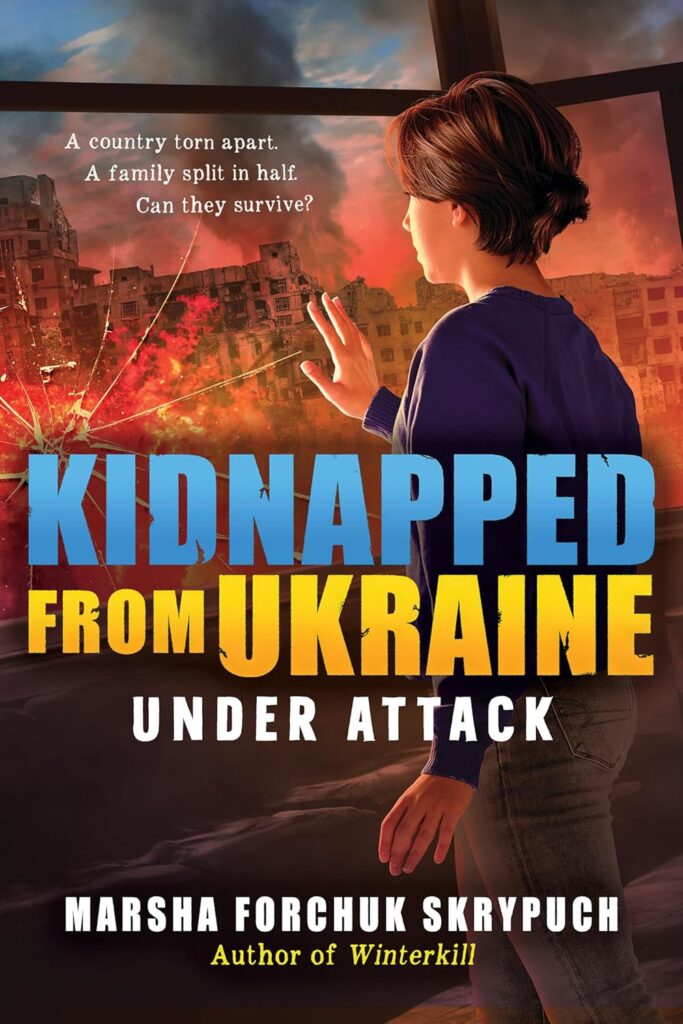
Kirkus starred review for Under Attack!
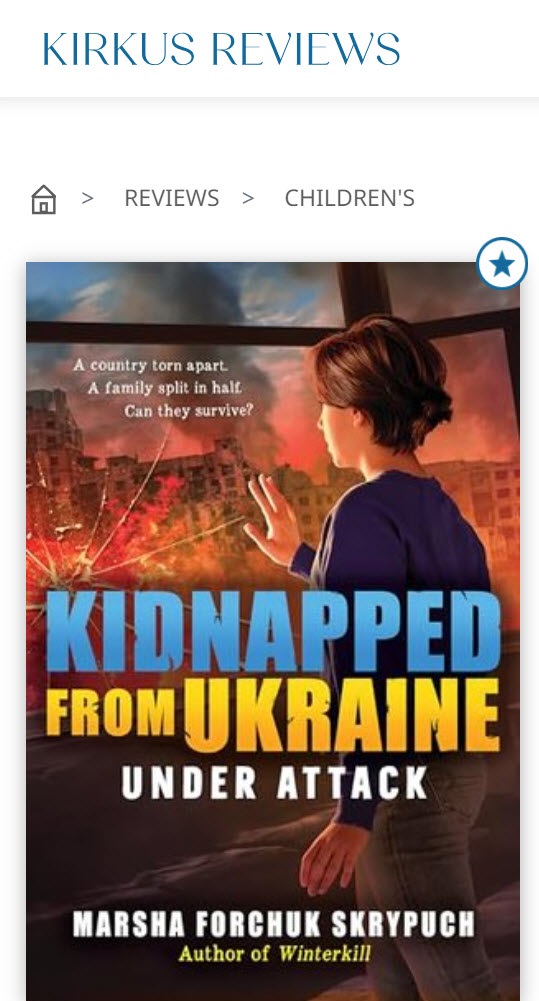
Kirkus says: “Gut-punching: This is essential reading.” Full review is here.
Kidnapped from Ukraine: audiobook
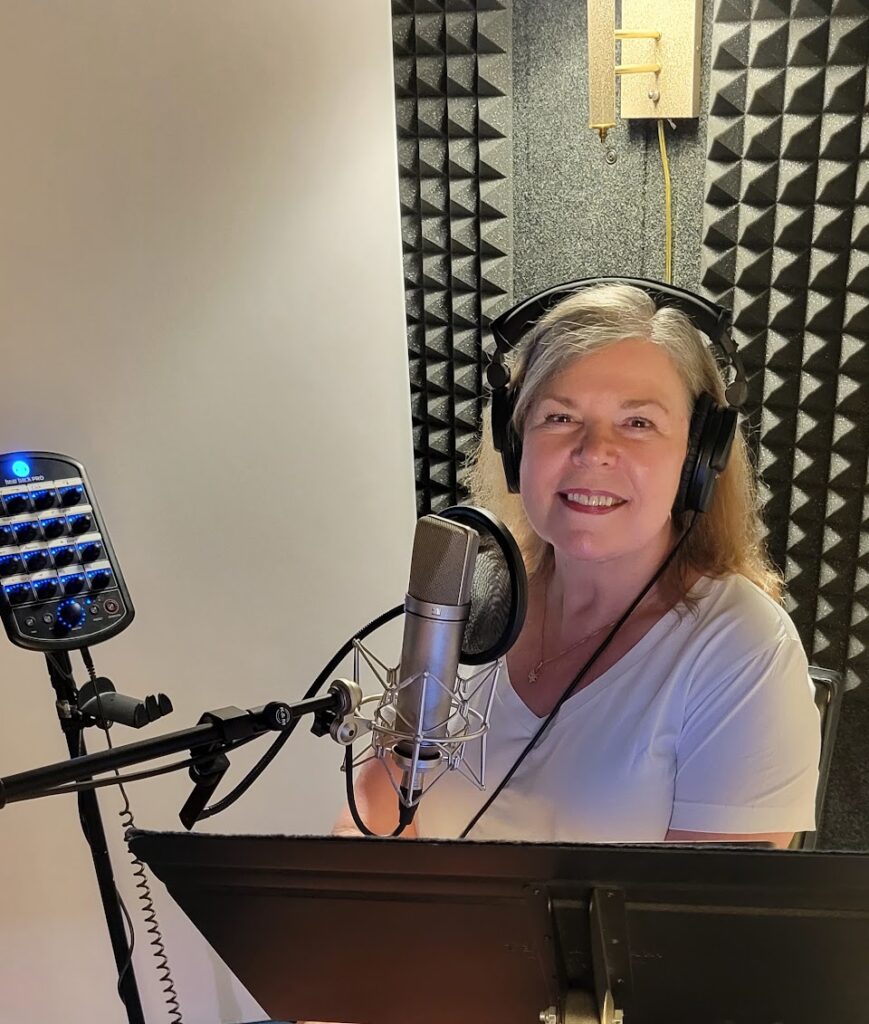
Love having the opportunity to speak the backmatter and acknowledgements for the audio editions of my books. Today, I did that for Kidnapped from Ukraine: Under Attack, Scholastic. Thank you, Will Crann at Catherine North Studios in Hamilton! I have deep respect for professional narrators who do this all the time.
Kidnapped from Ukraine #1 new release on Polish Amazon
Thank you Dr. Mateusz Świetlicki for sending me these screen shots from Polish Amazon. Kidnapped from Ukraine: Under Attack will be published on Jan 7, 2025 and is currently a #1 new release in two categories: Europe for children, and historical fiction for children:
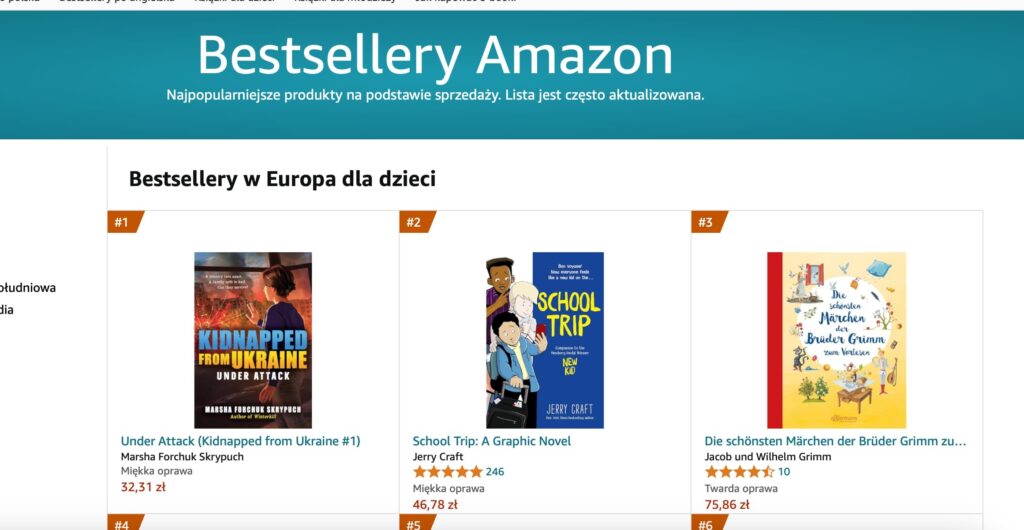
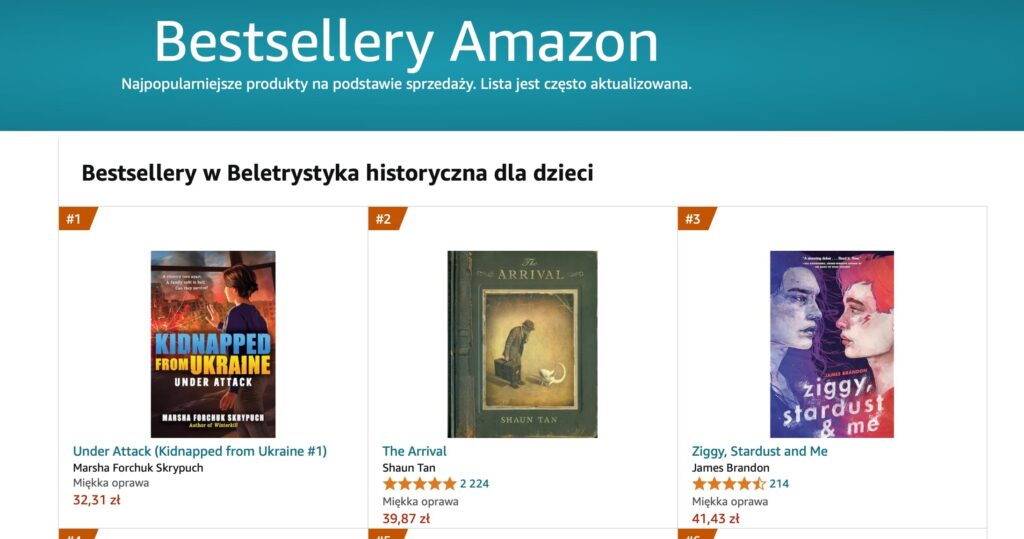
Kidnapped from Ukraine: Under Attack — book 1 and #1!
This novel will be published on Jan 7, 2025, so imagine my surprise to see it pop up as a #1 release on Amazon.com. Yay!
